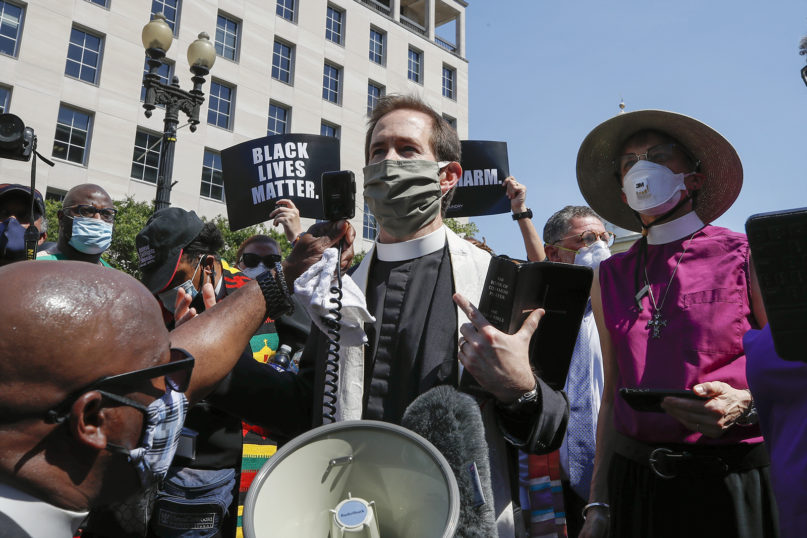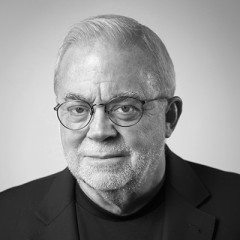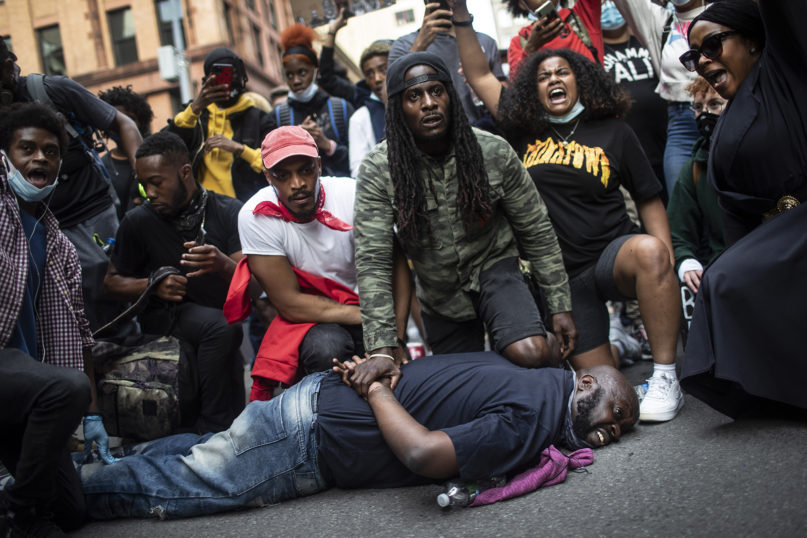(RNS) — Eight minutes and 46 seconds is a long time. It is enough time to stop, take some deep breaths, feel your body, to pray if you choose, think, reflect and ask what you’ve been missing. That’s what many are learning as we take a knee for nearly nine minutes at protests and vigils around the country in response to the killing of George Floyd.
Perhaps because a pandemic has closed down our nation and we were all watching, millions of white people now see what they have missed because of their resistance to stop and learn the meaning and consequences of 401 years of the racism and slavery that founded the United States of America. Now we are beginning to understand more fully the consequences of America’s original sin of racism, and how it still lethally lingers today. The call: the transformation of the United States. Will we heed that call or not?
To use biblical language, many of us are seeing this as kairos time, or “a propitious moment for decision or action,” as opposed to chronos, the regular, chronological, and sequential passing of time. Another definition of kairos calls it a time “when things come to a head.”
How we define things matters. Merriam-Webster announced this week that in response to persistent requests from Kennedy Mitchum, a 22-year-old Black woman from Missouri, it will update its definition of racism this month (for the first time in decades) to specifically name systemic oppression.
Of course, there has been a lot of necessary conversation about “changing the culture” of police and law enforcement and the broader structural realities of poverty, housing, mental health, addiction, education and economics. But we must also realize that the culture of America is already changing, thanks be to God. This is reflected in a broad shift in attitudes and perceptions nationwide, as recent public opinion has shown. Per reporting from The New York Times:
Over the last two weeks, support for Black Lives Matter increased by nearly as much as it had over the previous two years, according to data from Civiqs, an online survey research firm. By a 28-point margin, Civiqs finds that a majority of American voters support the movement, up from a 17-point margin before the most recent wave of protests began. A Monmouth University poll found that 76 percent of Americans consider racism and discrimination a “big problem,” up 26 points from 2015. The poll found that 57 percent of voters thought the anger behind the demonstrations was fully justified, while a further 21 percent called it somewhat justified. Polls show that a majority of Americans believe that the police are more likely to use deadly force against African-Americans, and that there’s a lot of discrimination against Black Americans in society. Back in 2013, when Black Lives Matter began, a majority of voters disagreed with all of these statements.
Witnessing this firsthand on the streets of Washington, D.C., has been moving. Earlier this month, I saw it in our “Solidarity Prayer Vigil” that Sojourners partnered on with the Episcopal Diocese of Washington and Bishop Mariann Budde. My family joined protesters outside St. John’s Episcopal Church in response to the president’s infamous photo op two days earlier. The noise, confusion, crowds and police threat made doing a traditional liturgy impossible, so we lifted up moments of silence and prayer. We eventually learned that the thousands of mostly young people in the street — likely of different faiths and many of no faith at all — knew the words of “Amazing Grace.” We all filled the air with the sweet sounds of this song, situating the old hymn alongside the anger, anguish and fear of both the police and COVID.

The Rev. Robert Fisher, rector of St. John’s Church, speaks June 3, 2020, down the block from the church that is across Lafayette Park from the White House in Washington. The Rev. Mariann Budde, right, bishop of the Episcopal Diocese of Washington, also spoke. (AP Photo/Alex Brandon)
The place that was filled with violence days earlier as police cleared peaceful protesters in Lafayette Square with tear gas has now been reborn in ways you can see and feel. Kairos. My two sons also went back after the transformation of the space and the renaming of the street around Lafayette Park to “Black Lives Matter Plaza,” which huge yellow letters now spell out, stretching for blocks on 16th Street. It’s now a festival space: a joyful environment of conversation, celebration, with huge Black Lives Matter signs displayed both on the street and in front of the St. John’s Church. My boys took me back on Sunday where a movement has gone mainstream, and it was the happiest afternoon I can remember in some time.
Churches, temples, mosques and other faith communities — all along 16th Street from the White House to the Maryland border — are keeping vigil and kneeling every Friday. In our own neighborhood, a father with his young daughter came to our front door to invite us to come out to a silent vigil at the park next door where our family has played and coached hundreds of Little League baseball games over many years. The field was full of carefully social distanced parents with their children; when the time came, everyone bent their knees and were quiet (even the kids!) for eight minutes and 46 seconds. Then everyone went home for dinner conversations about what we had just done and why. When parents talk to their children about something, it becomes a culture-changing moment, not just a passing media story.
Kneeling in silence is happening around the country — across geographic, religious, political and racial boundaries. In cities and towns large and small, and in blue and red and purple states, people of all ages keep coming out to the streets in protests led mostly by a new generation of Black leaders. Their momentum is changing the culture.
We see it in quick action at the municipal level as city councils rethink their police budgets. We see it in the continued pressure to investigate and charge police officers for the brutality they have inflicted on Black people, as we saw in yesterday’s announcement of murder charges against the officer who killed Rayshard Brooks and in the earlier charges against the officer who killed George Floyd — and as we continue to insist on justice for Breonna Taylor. We see it in the jubilant gathering of DACA recipients on the Supreme Court steps after the court ruled against President Donald Trump’s reversal of the program; they linked arms, chanting “Home is here!” We saw it earlier this week in the Supreme Court’s ruling to legally protect LGBTQ people from job discrimination.
Last week, my son Jack’s high school baseball coach convened a family Zoom call; we all expected to hear if and when baseball might reopen this summer. Instead, he invited one of our best-known D.C. baseball coaches to tell the story of how he and some of his fellow Black athletes were pulled over and arrested during college for something they had absolutely nothing to do with. As a result, he was removed from the baseball team his senior year, which ruined any opportunity he had to be drafted.
Most of our young baseball players and their parents know Coach Jared Williams but had never heard his story. It led to an ongoing conversation about how a new generation is choosing not to tolerate what has been accepted for far too long.
But we’re not naïve; those of us who have been in this struggle for decades have known the limits of imagination and shortness of attention spans. Whether our changing cultural consciousness will have a real effect on laws, policies and practices for policing, the systems of law enforcement, and the racially flawed and fissured structures of our society remains to be seen.

The Rev. Jim Wallis. Courtesy photo
But this past month has shown me that this time feels different. I pray that this time is different. If there is not a different response to what is clearly a kairos time, there could be devastating consequences for the soul and safety of the nation. It is time — time for all of us to embrace and act upon this kairos moment.
(The Rev. Jim Wallis is president of Sojourners. His new book Christ in Crisis: Why We Need to Reclaim Jesus is available now. Follow Jim on Twitter @JimWallis. The views expressed in this commentary do not necessarily reflect those of Religion News Service.)





